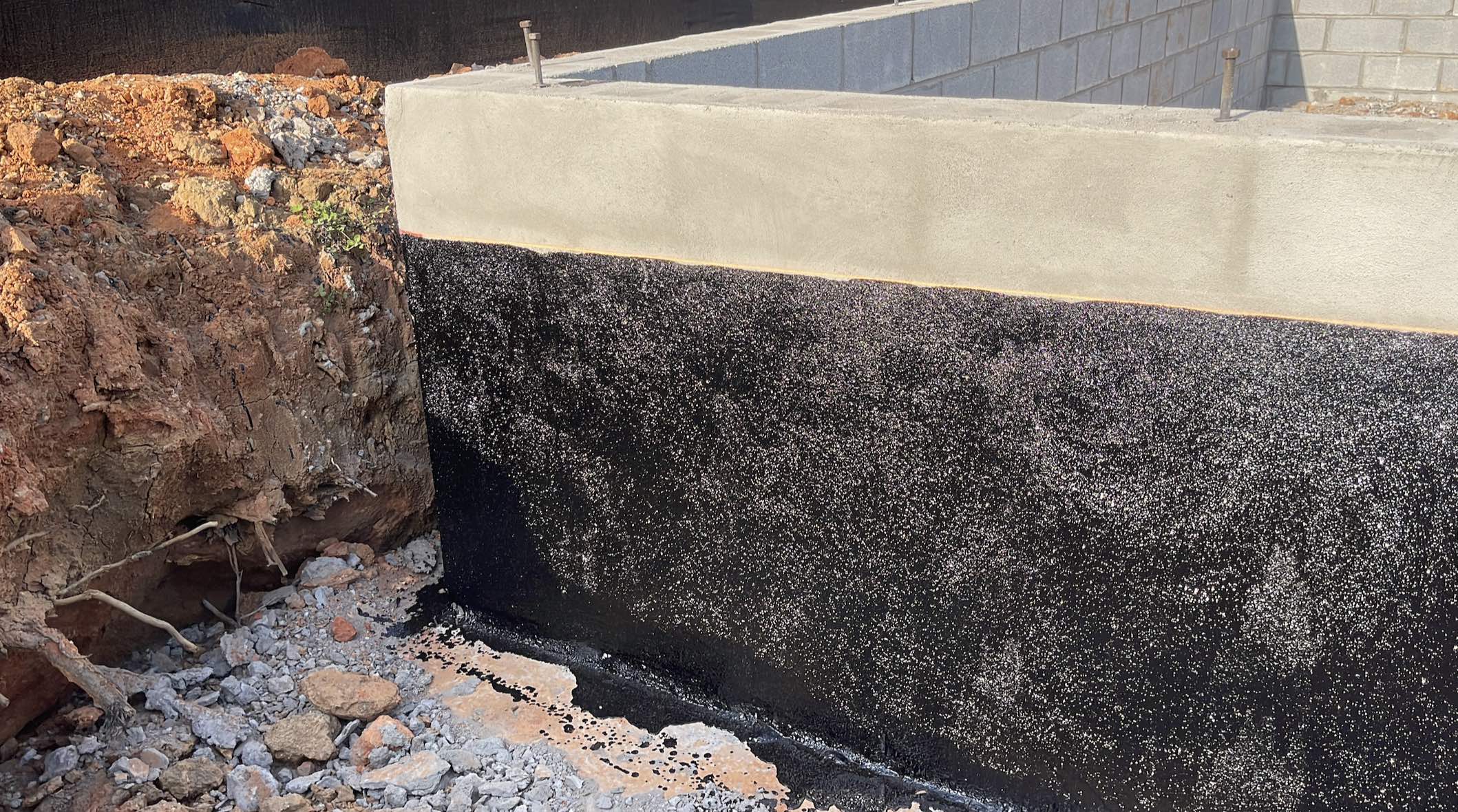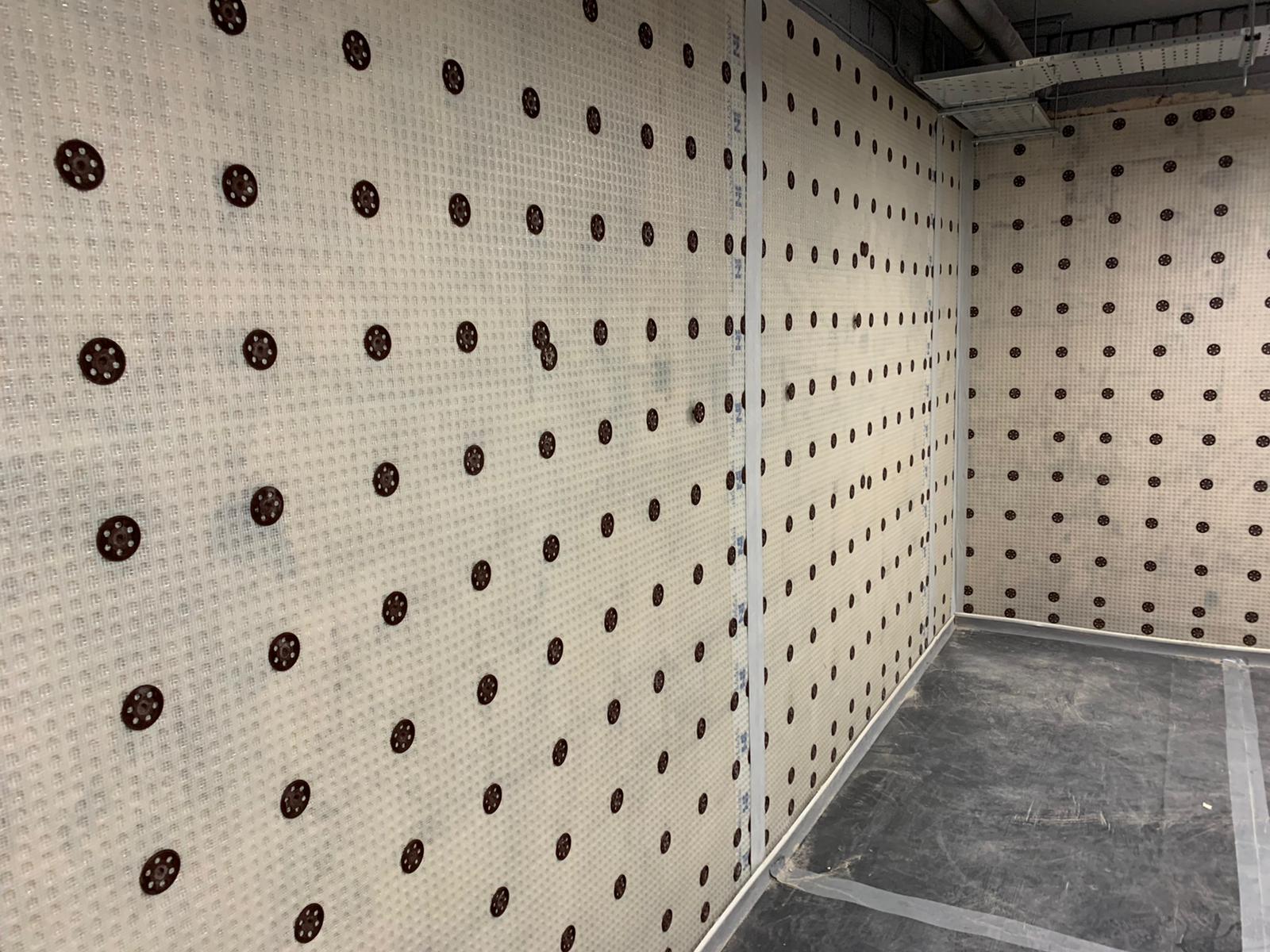Understanding the cost of professional damp removal newcastle
Understanding the cost of professional damp removal newcastle
Blog Article
Comprehending the Importance of Damp Proofing in Fighting Structural Damage
Damp proofing works as an essential defense against dampness seepage in buildings. This protective procedure can avoid significant architectural damages, yet many property owners stay not aware of its value. Identifying the signs of dampness and understanding the different options offered can be critical. However, neglecting damp proofing can result in serious repercussions. What are the details dangers and options that homeowner should consider?
What Is Damp Proofing and Just How Does It Function?
Wet proofing works as a crucial obstacle against wetness intrusion in structures. mould treatment newcastle. This process involves using certain materials and strategies to avoid water from permeating walls, floors, and various other architectural elements. Normally, damp proofing can be accomplished through the installment of wet evidence membranes, layers, or using specialized sealants.These techniques function by producing a protective layer that prevents moisture motion, ensuring that the interior atmosphere remains healthy and balanced and dry. Moist proofing is specifically vital in areas prone to high humidity or groundwater, as it helps keep the stability of the framework over time.Moreover, reliable moist proofing contributes to power effectiveness by preventing warm loss linked with moist settings. By dealing with possible wetness issues prior to they intensify, damp proofing offers as a positive action in safeguarding buildings from the detrimental impacts of water damage, inevitably prolonging their life-span and preserving their worth
Usual Indicators of Moisture in a Building
Wetness concerns within a building can show up via a number of obvious indicators that indicate the existence of dampness. One noticeable indication is the appearance of water discolorations on ceilings or wall surfaces, which often indicates moisture infiltration. Furthermore, bubbling or peeling paint can suggest that excess humidity is entraped under the surface area, bring about damage. Another common indication is the presence of mold and mold, which flourish in wet problems and can frequently be determined by their stuffy smell. Furthermore, a rise in moisture levels can cause condensation on home windows and other surface areas, highlighting wetness troubles. Deformed or irregular flooring might signify underlying dampness that endangers structural integrity. Recognizing these indicators early can aid minimize potential damages and maintain a safe living atmosphere. Regular examinations and timely activity are vital in dealing with dampness concerns before they escalate.
The Risks of Neglecting Damp Proofing
Neglecting moist proofing can result in significant threats to a building's architectural stability, as wetness accumulation may deteriorate wall surfaces and structures. Additionally, extended dampness develops an environment for mold and mildew development, presenting serious health and wellness risks to passengers. Dealing with these threats is crucial for guaranteeing both safety and security and longevity of the residential property.
Architectural Honesty Dangers
When property owners forget the relevance of efficient wet proofing, they expose their residential or commercial properties to considerable structural integrity hazards. Long term moisture seepage can cause the advancement of mold and mildew, which deteriorates foundational components and can jeopardize total stability. In addition, excess dampness can erode concrete and brickwork, causing splits and structural failings. Wood elements are especially at risk; they can rot and shed load-bearing capability, posturing severe dangers to the building's structure. Moreover, without treatment wet problems might attract parasites, such as termites, which further exacerbate structural degeneration. Inevitably, disregarding damp proofing actions can result in expensive repair work and possible security risks, highlighting the important function of proactive damp monitoring in maintaining the integrity of houses.
Carcinogen Problems
Just how can an apparently minor oversight cause serious wellness threats? Overlooking moist proofing can develop an atmosphere for mold development, which presents substantial wellness threats. Mold spores can trigger allergies, respiratory problems, and various other health and wellness problems, specifically in vulnerable populations such as youngsters, the senior, and people with pre-existing conditions. In addition, consistent dampness can draw in pests like bugs and rats, which carry illness that additionally endanger health. The existence of dampness also adds to a decline in indoor air high quality, worsening bronchial asthma and other respiratory ailments. Subsequently, the failure to attend to moist problems not only endangers architectural stability yet additionally jeopardizes the well-being of residents, highlighting the crucial requirement for efficient moist proofing measures.
Different Kinds Of Damp Proofing Solutions
Various variables can add to damp issues in buildings, selecting the appropriate damp proofing solution is essential for maintaining architectural integrity. Numerous choices are offered, each tailored to specific conditions.One usual option is a damp-proof membrane (DPM), commonly made from polyethylene or bitumen, which is set up in floors and walls to protect against wetness access. An additional option is damp-proof programs (DPC), which are layers of waterproof material placed within walls to block climbing damp.Chemical damp proofing involves infusing waterproofing chemicals into walls to produce an obstacle versus dampness. Furthermore, exterior therapies such as tanking, which entails applying a water-proof layer to the beyond structures, can be efficient in stopping water penetration.Each remedy has its advantages and is chosen based on the building's specific concerns, ecological problems, and long-term upkeep considerations, guaranteeing perfect protection against damp-related damages.

The Expense of Damp Damage vs. Avoidance
Comprehending the monetary effects of moist damage contrasted to avoidance highlights the significance of positive measures. The expenses related to wet damage can be considerable, including repair services to structural elements, mold and mildew remediation, and prospective health-related costs. Home owners might deal with significant financial stress if considerable damages happens, causing increased insurance coverage premiums and shed home value.In contrast, buying moist proofing solutions is typically much more cost-effective. Preliminary costs for avoidance approaches, such as setting up damp-proof membranes or boosting drain systems, are typically surpassed by the lasting cost savings from preventing costly repair work. Additionally, stopping wet issues can boost a building's overall value and charm, making it a wise financial investment. When assessing the price of moist damages versus prevention, it comes to be clear that taking proactive steps can protect financial passions and keep the integrity of the residential property in time.
Picking the Right Damp Proofing Approach for Your Home
Which damp proofing method is most ideal for a details building usually depends upon various elements, including the structure's age, existing moisture concerns, and regional environmental problems. For older frameworks, traditional approaches such as asphalt membrane layers or cementitious coverings may be more effective, as they can supply a robust obstacle against increasing moist. In contrast, more recent structures could gain from modern remedies like injected damp-proof training courses, which are much less intrusive and can be tailored to specific moisture challenges.Additionally, residential properties in locations with high water tables or heavy rainfall might require more innovative strategies, such as cavity wall drainage systems or external waterproofing. Property owners ought to also think about the details products utilized in their structure's construction, as some approaches might not be suitable. Inevitably, an extensive analysis by a specialist can lead homeowner in picking one of the most effective moist proofing approach customized to their special circumstances.
Keeping Your Damp Proofing System Over Time
Normal upkeep of a damp proofing system is important for ensuring its long-lasting performance and protecting a property from moisture-related damages. Property proprietors need to perform routine evaluations to determine any signs of wear or compromise in the moist proofing layer. This includes monitoring for splits, peeling paint, or mold and mildew growth, which may show wetness intrusion.Additionally, it is advisable to tidy rain gutters and downspouts on a regular basis to stop water buildup around the foundation. Reapplying membranes or sealants may be needed if wear and tear is observed.Engaging professional services for regular evaluations can additionally improve the longevity of the system. These specialists can offer insights right into possible vulnerabilities and suggest prompt repair work.
Regularly Asked Questions
Exactly How Long Does Damp Proofing Treatment Last Prior To Requiring Fixings?
The long life of wet proofing treatment typically varies from 10 to thirty years, depending upon variables such as the method utilized, ecological problems, and upkeep practices. Routine examinations can assist figure out when repair work may be needed.
Is Do It Yourself Damp Proofing Effective Compared to Expert Solutions?
The efficiency of DIY moist proofing differs substantially. mould treatment newcastle. While some people might accomplish satisfactory outcomes, professional solutions commonly guarantee extensive remedies, leveraging expertise and top quality materials to protect against future issues a lot more reliably than the majority of DIY attempts
Can Damp Proofing Improve Indoor Air High Quality?
The question of whether wet proofing can improve indoor air quality arises regularly. Effective damp proofing reduces moisture degrees, thus lessening here mold and mildew growth and allergens, eventually adding to a healthier indoor environment for occupants.
Exist Details Regulations for Damp Proofing in Different Areas?
Rules for damp proofing differ by area, frequently affected by regional building regulations and ecological conditions. Compliance warranties efficient wetness control, promoting and guarding frameworks security, which highlights the necessity for adherence to these particular regulations.

What Are the Long-Term Benefits of Proper Damp Proofing?
The long-term advantages of proper damp proofing consist of improved structural stability, minimized upkeep expenses, boosted interior air top quality, and increased building worth. These advantages add to a healthier living atmosphere and extended life-span of buildings. Typically, damp proofing can be achieved via the installment of damp evidence membrane layers, coatings, or the usage of specialized sealants.These methods function by producing a safety layer that inhibits dampness activity, making certain that the interior environment stays healthy and dry. Wet proofing is especially crucial in locations susceptible to high moisture or groundwater, as it aids preserve the integrity of the framework over time.Moreover, efficient damp proofing adds to power performance by preventing warmth loss linked with wet environments. Neglecting wet proofing can lead to substantial hazards to a building's architectural stability, as moisture accumulation may damage wall surfaces and structures (mould treatment newcastle). Various elements can contribute to damp concerns in buildings, selecting the appropriate moist proofing service is vital for preserving architectural stability. Which damp proofing method is most suitable for a certain building often depends on various factors, consisting of the structure's age, existing moisture issues, and neighborhood environmental problems
Report this page